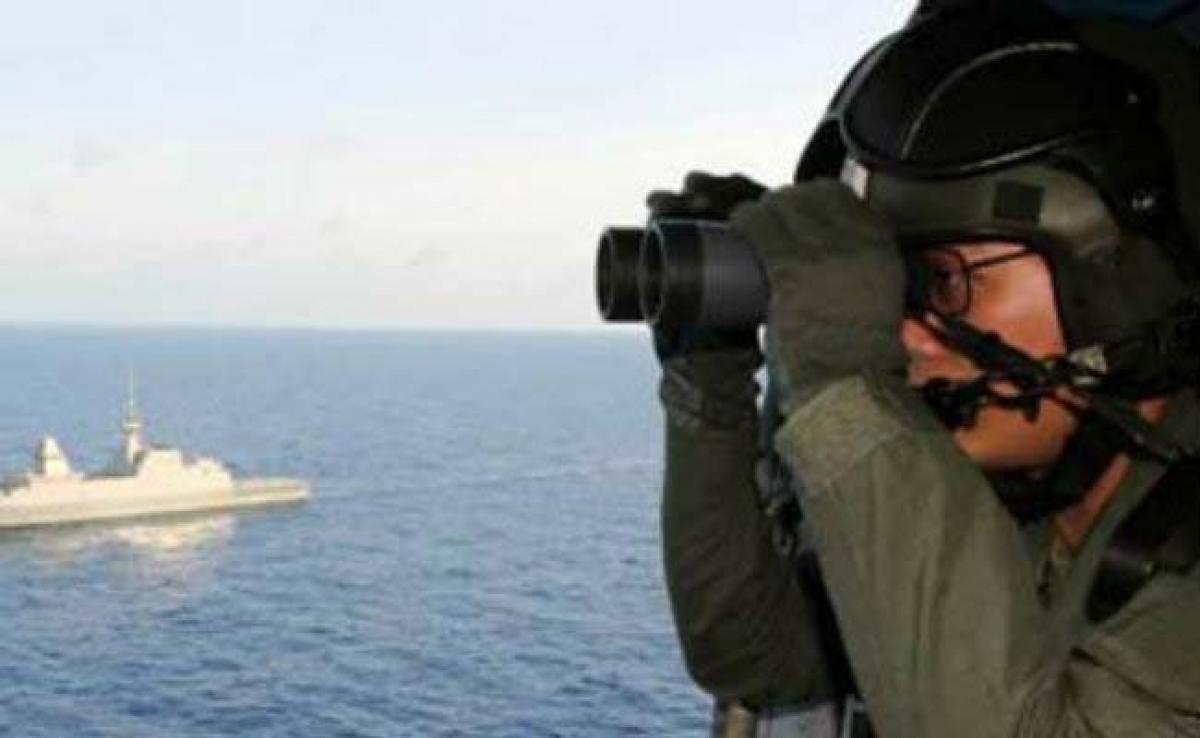Live
- Mpower’s survey on edu loans
- IIP growth falls to 3.5% in Oct
- Easing food prices lower retail inflation to 5.48% in November
- Space allocation for packaging units at MSME parks on anvil
- Maha Kumbh: Yogi reviews preparations
- Gadkari on accidents: I try to hide my face in meetings abroad
- Abetment of suicide: Mere harassment not sufficient to find accused guilty says SC
- 6.79L homes to receive water under Amrut-II
- Cops prohibit assembly of 5 or more near Group-II exam centres
- Avanthi, Grandhi quit YSRCP, lash out at Jagan
Just In

The captain of the Malaysian Airlines aircraft that vanished somewhere in the southern Indian Ocean with 239 people on board had flown a route on his home flight simulator six weeks earlier that was \"initially similar\" to the one actually taken, Australian authorities said on Tuesday.
The captain of the Malaysian Airlines aircraft that vanished somewhere in the southern Indian Ocean with 239 people on board had flown a route on his home flight simulator six weeks earlier that was "initially similar" to the one actually taken, Australian authorities said on Tuesday.
The details were contained in a 440-page final report by the Australian Transport Safety Bureau (ATSB) on the unsuccessful search for flight MH370.
The disappearance of the Boeing 777 on March 8, 2014, on a flight to Beijing from the Malaysian capital of Kuala Lumpur, has become one of the world's greatest aviation mysteries.
The report concluded that the reasons for the loss of the aircraft could not be established with certainty until the aircraft was found.
"It is almost inconceivable and certainly societally unacceptable in the modern aviation era...for a large commercial aircraft to be missing and for the world not to know with certainty what became of the aircraft and those on board," the ATSB said.
The aircraft was thought to have been diverted thousands of miles off course out over the southern Indian Ocean before crashing off the coast of Western Australia.
Australia, which led the underwater hunt, and Malaysia and China called off a A$200 million ($160 million) search for the plane in January, despite the protests of families of those onboard.
HOME SIMULATION
Six weeks before the aircraft's disappearance, Captain Zaharie Ahmad Shah used his home simulator to fly a route that was initially similar to part of the route flown by MH370 up the Strait of Malacca, with a left-hand turn and track into the southern Indian Ocean, the ATSB said in its report.
"By the last data point the aircraft had flown approximately 4,200 nautical miles," the report said. "This was further than was possible with the fuel loaded on board the aircraft for flight MH370."
The simulated aircraft track was also inconsistent with those modelled using satellite signal data from MH370, the report said.
However, the ATSB said there were enough similarities to the flight path of MH370 for the agency to carefully consider the possible implications for the underwater search area, including whether it glided after fuel exhaustion or was ditched in a controlled manner.
Aircraft debris found later indicated the flaps were most likely retracted, which wasn't consistent with a controlled ditching, the report said.
Australia's main scientific agency said in August it believes with "unprecedented precision and certainty" that the plane crashed northeast of the search zone.
But those findings were dismissed by Australia's government at the time as not specific enough, and the search has not been re-opened. Doing so depends on finding credible, new evidence about the plane's whereabouts.
The ATSB report published on Tuesday detailed the unsuccessful 1,046-day hunt for the plane, above and below the surface of the Indian Ocean, and scientific analyses of satellite pictures, sea currents and even barnacles found clinging to a piece of the plane found on Reunion Island.
"The understanding of where MH370 may be located is better now than it has ever been. The underwater search has eliminated most of the high probability areas," the ATSB said.
"We deeply regret that we have not been able to locate the aircraft, nor those 239 souls on board that remain missing."
It recommends aircraft and aircraft equipment manufacturers investigate providing better methods of automated satellite tracking for planes if they encounter problems during flight in future.
Malaysia has continued to investigate the plane's whereabouts and in August said it received an offer from a private seabed exploration firm, Ocean Infinity, to resume the search.
Malaysian investigators said in 2015 there was nothing suspicious in the financial, medical or personal histories of pilots or crew.

© 2024 Hyderabad Media House Limited/The Hans India. All rights reserved. Powered by hocalwire.com







